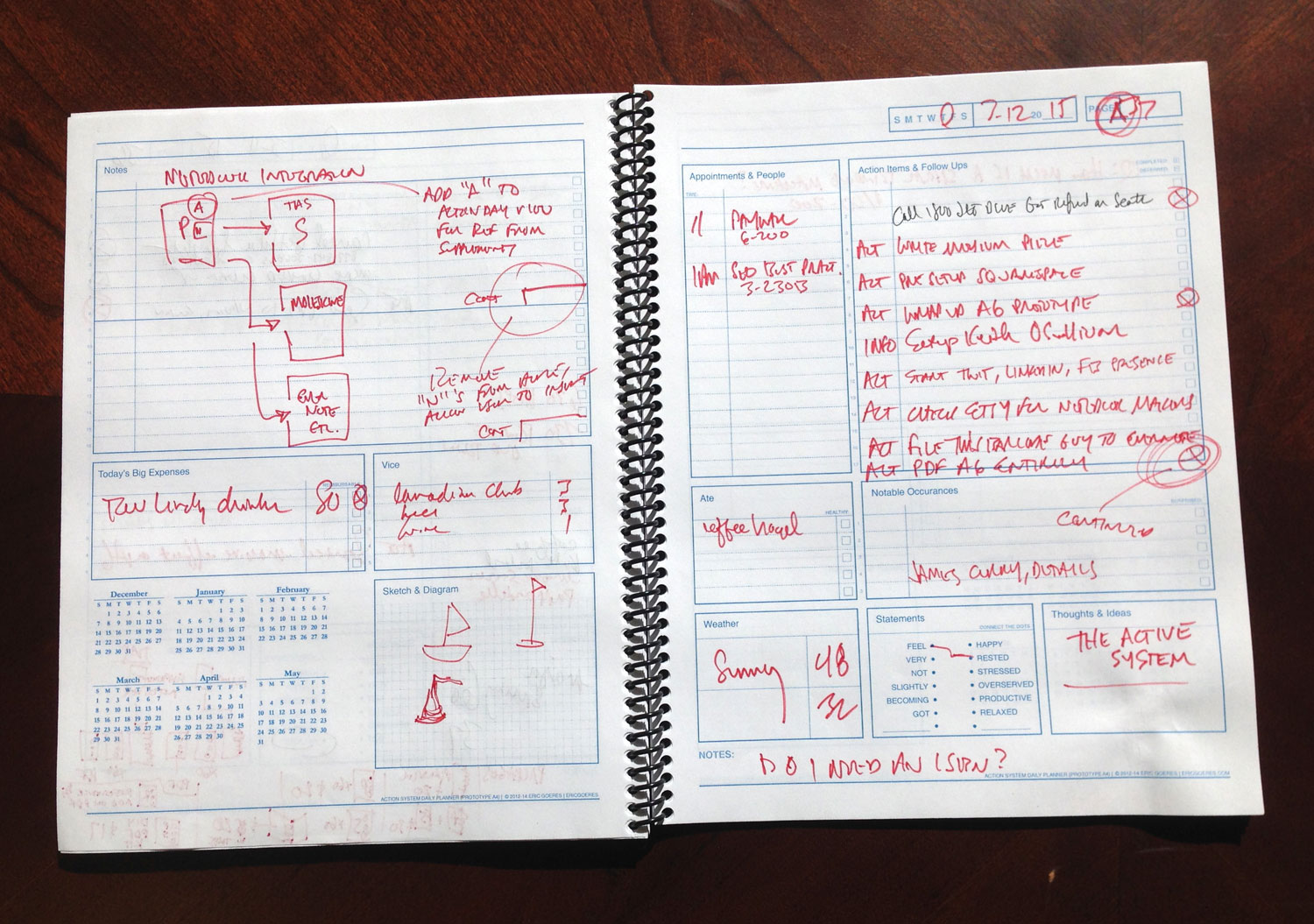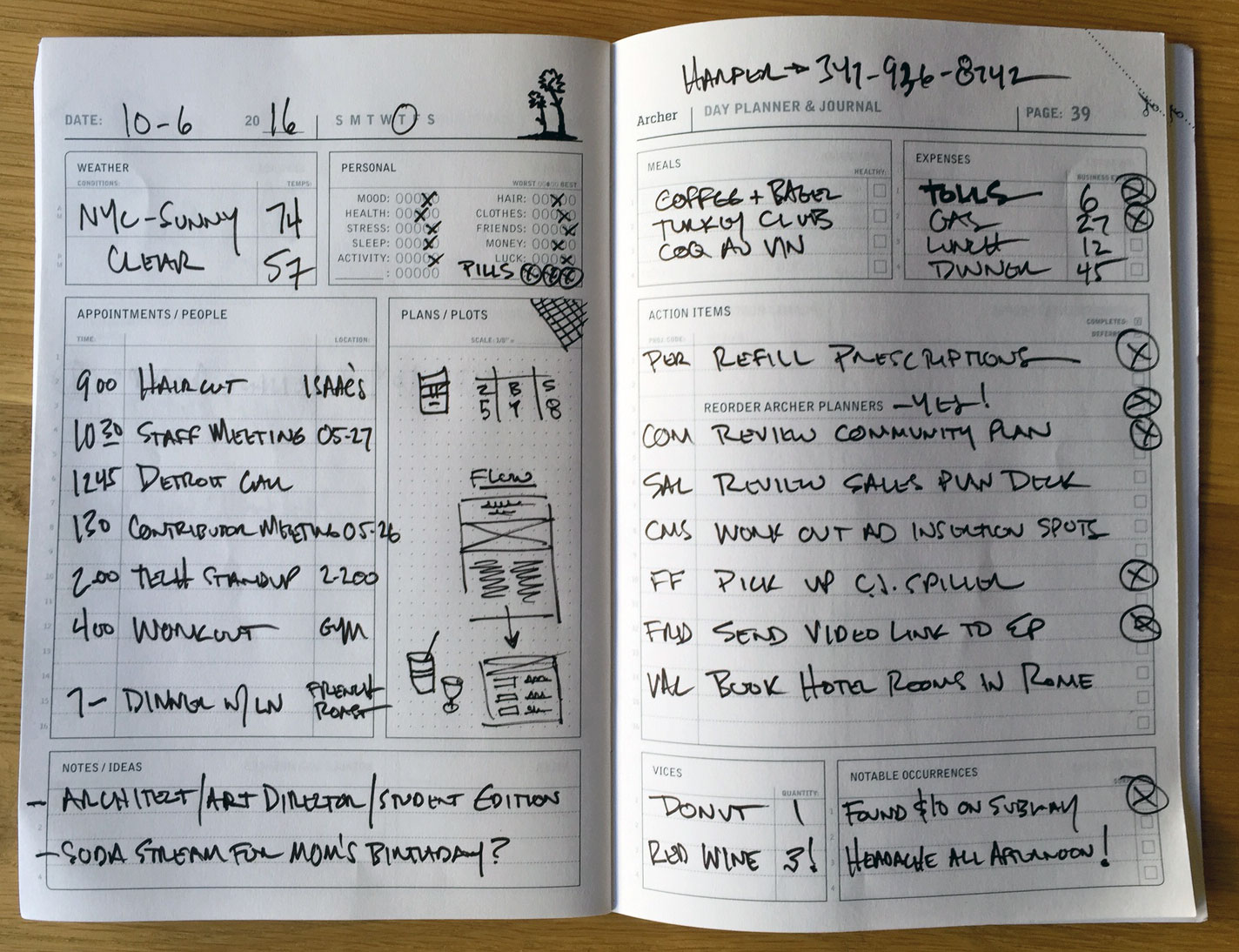
How I launched an Amazon business in less than 10 hours a week
It was 2012. The economy was in shambles, my industry was reeling, and I was increasingly being asked to do multiple jobs at work. I could barely keep up.
I loaded my iPhone with apps like Evernote, Outlook, Mail, and Agenda to keep track of to-dos, appointments, and meetings. But I found myself more unfocused and lost in the swirl of life than ever.
I started using an old-fashioned notepad for my to-do list, and liked it. Then I started printing my Outlook calendar as well. That worked better, too. On those printouts, I’d add notes: memorable weather, funny things people said, ideas. These pages became meaningful, so I started three-hole punching them and storing them in a binder.
I quickly realized a few things. First, I was remembering things better. Second, I was much more organized and productive. And third, I’d unwittingly created an artifact of daily life that was unlike anything offered by a diary or a digital to-do list. It had personality and presence. And permanence.
I thought, Why not design a simple one-page worksheet that incorporated all the elements and dimensions of a day onto a single sheet?
It was this realization that would drive me to start the Active System Company, a firm that designs and publishes “forms and formats for life.”
It’s not a large business, but at the end of its first year, it generates enough profit to cover my mortgage. It runs more or less on autopilot thanks to outsourced bookkeeping, manufacturing, and fulfillment. It doesn’t distract me from my day job, so I still bring home an adult-sized paycheck.
It’s fun, and it’s something people find interesting to talk about.
The seed was actually planted by Tim Ferriss’s The 4-Hour Workweek. In the book, Ferriss encourages you to develop a product from scratch, offload all of the work to other people, keep what’s remaining of the profit, and move on to something else. Create and outsource, spending about 4 hours a week involved only with the most important parts of the business — the products and the customers.
Here’s how I applied this to launching a business.
The step-by-step of launching a business that runs on autopilot
In my spare time, I started designing prototypes of a paper-based personal organization system. The first ones looked like this:


I’d print out two or three copies, use them, make improvements, and then print them out again. I also asked coworkers for feedback. This process repeated for a year or so. The design, layout, and usefulness slowly got better and better. The second prototype looked like this:


I sent the prototypes to friends and family with an urgent plea: Please use this booklet to keep track of your work life for a few weeks and let me know what you think. Suggestions rolled in. I made adjustments and created another set of prototypes.
At the same time, I did a Google search for “business management” and the name of my town in upstate New York. It wasn’t long before I was meeting with a two-person company that would do anything necessary to manage my business, no matter how small or how large, for $35 per hour. Revolutionary.
I armed them with a spec sheet for my notebook and asked them to contact ten commercial printers for quotes. They also set up my bookkeeping. Meanwhile, I finalized the designs, settled on a name (The Archer Planner), and picked a printer. Soon the presses were rolling.


My marketing plan was simple: Sell on Amazon exclusively, using the excellent Fulfillment by Amazon program. After the product was printed, I sent pre-paid mailing labels to my printer, which shipped directly to a fulfillment center. Days later, I was up and running on Amazon.
That was a year ago. Today, the business essentially runs itself. My business managers send me a simple profit and loss statement and balance sheet every month. When inventory gets low, I look for customer feedback, adjust my designs, and send the files back to my printer. They print the books, ship them to Amazon, and on it goes.
In my spare time, I work on other booklets. I have ideas for things like wedding planning journals and travel logs. I will soon bring one of those to market. My goal is to launch one new product every year. I want to build the business over time, but I don’t want to bite off too much or move too fast.
I wouldn’t say launching the Active System Company was easy. But it wasn’t exactly hard either. I have learned a lot of lessons along the way. Here are the five biggest:
Ready to improve your habits and level up your life? Download our FREE Ultimate Guide To Habits below.
Lesson 1: Lucrative business ideas are all around you
What are you longing for? An unspillable coffee mug? Eyeless potatoes? A reliable service to mow the lawn? Your unmet needs are product and business opportunities. Solve those, for yourself and the world.
Lesson 2: A few singles are as good as one home run
What do you call musicians who only ever have one big hit? Failures.
Think of your business like a diversified stock portfolio and develop a number of business ideas simultaneously. Some will die as half-finished concept drafts, others will tank in market research and business planning, and others will fail in the market itself (like my dating app — bad idea). You may discover a big hit, or you may find yourself with a few self-sustaining, easy-to-manage moneymakers. Both are great.
Lesson 3: A bankruptcy plan is just as useful as a business plan
Identifying the potential failure points is a great antidote for that blinding optimism that comes with any new idea. I asked myself, “What can I do to really ruin this business?” This immediately became a list of things that I’ll never take my eye off of.
Customer reviews and feedback are the lifeblood of making money online, so tracking what they’re saying and solving problems in real time is job one for me. I also watch shipping, receiving, and returns closely.
That gives me the opportunity to fix problems proactively, which can lead to a “great customer service” review. I keep on top of this daily, cycling through a custom checklist of tasks to ensure nothing gets missed.
Lesson 4: Know when to stop giving
You can dedicate only so much of yourself to your idea.
You have to be a husband, boyfriend, mother, or partner, too. You may need your day job. The softball league might be important to you. Don’t think that your side project has to be more important than life itself. Sure, give what you can. But if it asks for too much, the idea isn’t right for you.
Still, if you can block out your lunch hour for a month and dedicate that time to working on your passion project, you’ll be amazed at the progress you can make. I still reserve noon to one o’clock on my calendar every day and go through the to-dos on my side business (blocking out time like this is one of my favorite productivity tips).
This compartmentalization keeps stress levels low, the business moving, and the rest of my life largely free of untimely disruptions.
Lesson 5: The world favors those who take action
Once you launch your business, the forces of nature will take notice and carry you along. Friends, acquaintances, people who use your product will soon be your champions. And on the rainy days when you wonder why you bother, you’ll have the answer.
And believe me, it’ll carry you forward a long, long way.



